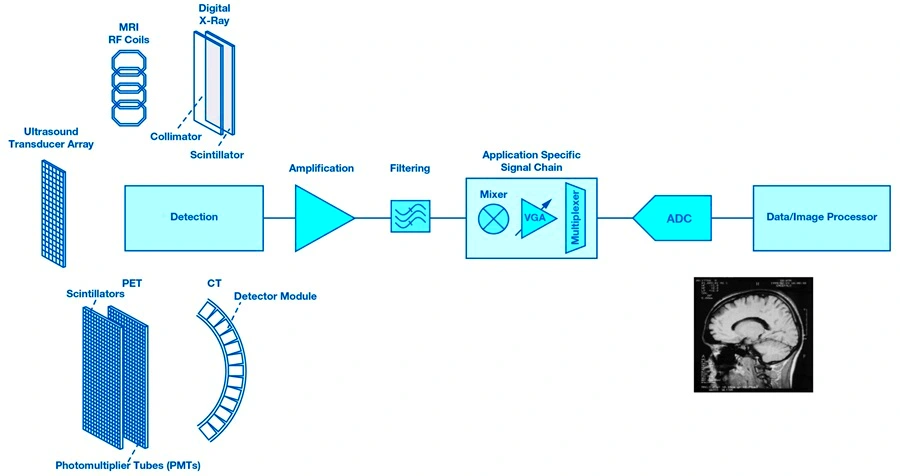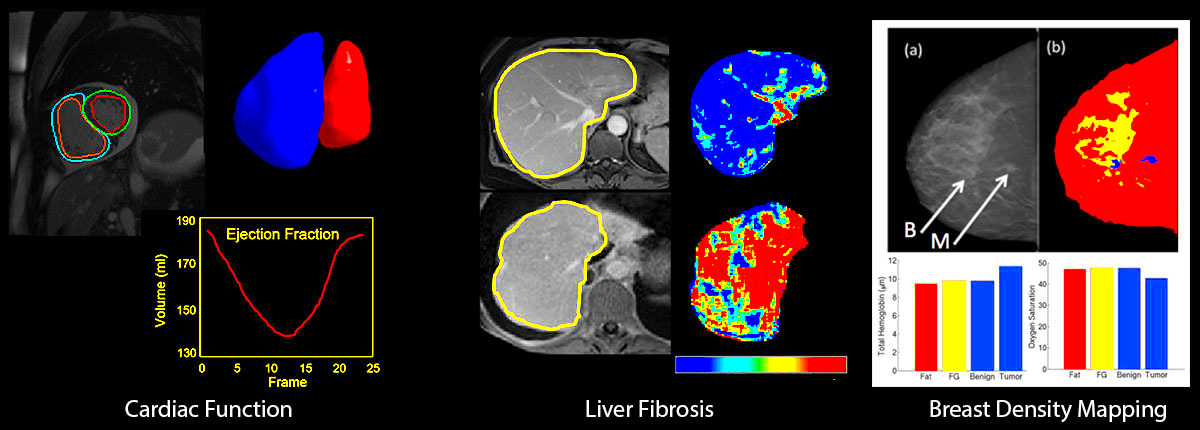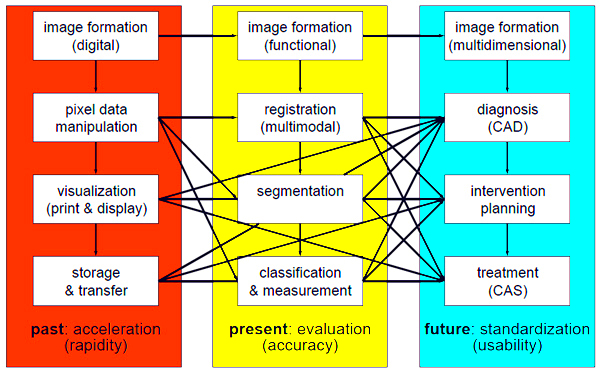Medical imaging plays a crucial role in modern healthcare by helping doctors visualize the inside of the body without invasive procedures. But how do these images get processed into something meaningful? This is where information processing comes into play. It’s the bridge between raw data captured by imaging devices and the clear, detailed visuals doctors rely on for diagnosis and treatment. By applying advanced algorithms and technologies, information processing enhances the accuracy and usability of medical images.
From improving image clarity to assisting in early disease detection, information processing ensures that medical imaging delivers precise results. It’s a field constantly evolving with technological advancements, offering better tools for both patients and healthcare professionals.
How Medical Imaging Works

At its core, medical imaging involves capturing images of the internal structures of the body using specialized machines. These devices use different methods to generate images, depending on the area being examined and the condition being diagnosed.
Here’s a simple breakdown of the process:
- Data Capture: The machine captures data from the body using methods like X-rays, sound waves, or magnetic fields.
- Processing: The raw data is processed using advanced algorithms to create interpretable images.
- Visualization: The final images are displayed for analysis, either on screens or as printed outputs.
For instance, an X-ray uses electromagnetic waves to produce images of bones, while an MRI uses magnetic fields and radio waves to capture detailed views of soft tissues. Each type of imaging has its unique way of working but relies heavily on information processing to refine the data into usable formats.
Types of Medical Imaging Technologies

Medical imaging technologies are diverse, each suited to specific medical needs. Here are some of the most common types:
| Technology | Primary Use |
|---|---|
| X-rays | Visualizing bones and detecting fractures. |
| CT Scans | Providing detailed cross-sectional images of the body. |
| Ultrasound | Monitoring pregnancies and examining soft tissues. |
| MRI | Capturing detailed images of organs and soft tissues. |
| PET Scans | Detecting cancer, heart disease, and brain disorders. |
Each technology serves a specific purpose, ensuring that medical professionals have the right tools to diagnose and treat a variety of conditions. The choice of imaging depends on the patient’s symptoms and the level of detail required for diagnosis.
Role of Information Processing in Imaging Accuracy

In medical imaging, the accuracy of the final image is crucial for making correct diagnoses. Information processing plays a vital role in ensuring that the raw data captured by imaging machines is transformed into clear, high-quality visuals. Without this step, the images could be blurry, incomplete, or misleading, potentially leading to incorrect diagnoses and treatment plans.
Through sophisticated algorithms and software, information processing helps refine the images by enhancing resolution, contrast, and clarity. It also reduces noise, making it easier for doctors to detect abnormalities. Below are some key ways information processing improves imaging accuracy:
- Noise Reduction: Removes unwanted distortions that could obscure important details in the image.
- Image Enhancement: Improves contrast and sharpness, making it easier to identify critical features.
- 3D Reconstruction: Converts 2D images into 3D models, offering a more comprehensive view of the area being examined.
- Edge Detection: Helps to clearly define boundaries, making it easier to identify tumors, fractures, or other anomalies.
By refining the quality of medical images, information processing ensures that healthcare professionals have reliable data for accurate diagnoses and treatment decisions.
Applications of Information Processing in Healthcare
Information processing in healthcare is not limited to creating clearer images—it also extends to various applications that enhance the overall quality of patient care. From diagnostic imaging to treatment planning, information processing plays a significant role in making healthcare more efficient, effective, and precise.
Here are a few key applications of information processing in the healthcare sector:
- Diagnostic Imaging: Processing medical images from technologies like X-rays, MRIs, and CT scans to identify issues such as tumors, fractures, or internal bleeding.
- Robot-Assisted Surgery: Advanced algorithms process data in real-time, guiding robotic systems to assist surgeons during delicate procedures.
- Personalized Treatment Plans: Information processing is used to analyze patient data, medical history, and imaging results to create individualized treatment strategies.
- Telemedicine: Processed images and patient data are transmitted to specialists for remote consultations, making healthcare more accessible, especially in rural areas.
- Predictive Analytics: Algorithms process vast amounts of patient data to predict disease progression and outcomes, helping doctors take proactive measures.
By improving the speed and accuracy of diagnosis, treatment, and patient monitoring, information processing significantly enhances healthcare delivery and patient outcomes.
Benefits of Advanced Information Processing
As technology continues to evolve, the benefits of advanced information processing in medical imaging are becoming increasingly evident. The use of artificial intelligence (AI), machine learning, and complex algorithms has revolutionized how medical images are processed, analyzed, and used for clinical decision-making.
Here are some of the major benefits:
- Improved Diagnosis: AI-powered algorithms can identify patterns and anomalies that might be overlooked by the human eye, leading to earlier detection of diseases such as cancer or heart conditions.
- Faster Processing Time: Advanced processing techniques significantly reduce the time it takes to generate high-quality images, allowing doctors to make quicker decisions in critical situations.
- Increased Precision: Advanced information processing enables highly detailed images, improving the accuracy of surgical planning and interventions.
- Cost Efficiency: By automating image analysis, healthcare facilities can reduce costs associated with manual analysis and improve overall efficiency in patient care.
- Remote Access: Processed images and diagnostic reports can be easily shared with specialists across the globe, allowing for second opinions and more comprehensive care for patients in remote areas.
Overall, advanced information processing enhances the capabilities of medical imaging systems, leading to better patient outcomes, faster treatments, and more accurate diagnoses.
Challenges in Medical Imaging and Solutions
Medical imaging is a powerful tool in modern healthcare, but it comes with its own set of challenges. Despite advancements in technology, issues like image quality, data overload, and accessibility still impact the effectiveness of imaging techniques. These challenges can slow down diagnosis and treatment or even lead to errors if not properly addressed. Let’s take a look at some common challenges and how they can be solved.
Here are some of the key challenges faced in medical imaging:
- Image Quality: Sometimes, images may not have enough clarity or detail, making it difficult to detect conditions like tumors.
Solution: Using advanced image enhancement algorithms and AI can improve clarity, contrast, and detail. - Data Overload: Medical imaging generates large volumes of data, which can overwhelm healthcare providers.
Solution: Implementing automated image analysis and cloud-based storage helps manage and process data more efficiently. - High Costs: High-end imaging equipment like MRIs and CT scanners are expensive, which may limit accessibility.
Solution: Developing more affordable and portable imaging technologies can help make these tools available to a wider population. - Patient Safety Concerns: Certain imaging techniques, like X-rays and CT scans, use radiation, which can pose risks if overused.
Solution: Exploring alternative techniques, such as MRI and ultrasound, that don’t rely on radiation can help reduce these risks.
By addressing these challenges with ongoing research and technological advancements, the effectiveness and accessibility of medical imaging continue to improve.
Frequently Asked Questions
Here are some common questions people have about medical imaging and information processing:
- What is the most common type of medical imaging?
The most common types of medical imaging are X-rays, CT scans, and MRIs. These technologies are frequently used to examine bones, tissues, and organs. - How does information processing improve image quality?
Information processing helps improve image quality by enhancing resolution, removing noise, and increasing contrast, making it easier to identify medical conditions. - Is medical imaging safe?
Most types of medical imaging are safe. However, some techniques that use radiation, such as X-rays and CT scans, should be used cautiously to minimize exposure. Non-radiation-based methods like MRIs and ultrasounds are safer alternatives. - Can AI help with medical imaging?
Yes! AI and machine learning are being used to analyze medical images, identify patterns, and even assist in diagnosing conditions like cancer and heart disease with great accuracy. - Why is medical imaging so expensive?
Medical imaging equipment, such as MRIs and CT scanners, are expensive to purchase and maintain. The costs associated with high-quality imaging can be a barrier for some healthcare systems.
Conclusion
Medical imaging, backed by sophisticated information processing, is essential for diagnosing and treating a wide range of medical conditions. From improving image clarity to enhancing diagnostic accuracy, the role of information processing continues to evolve, bringing significant benefits to healthcare. While challenges like data overload and high costs remain, advancements in technology and the integration of AI are helping address these issues.
As the field of medical imaging continues to advance, it holds great promise for improving patient outcomes, reducing healthcare costs, and providing faster, more accurate diagnoses. With ongoing innovation and development, the future of medical imaging looks brighter than ever.

 admin
admin








